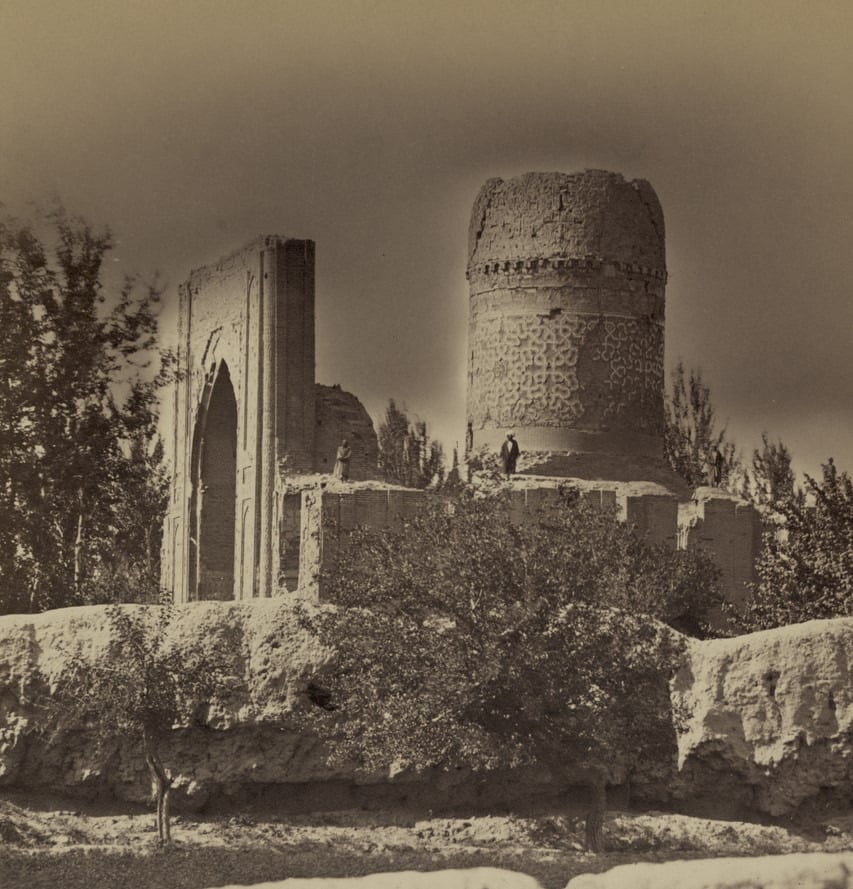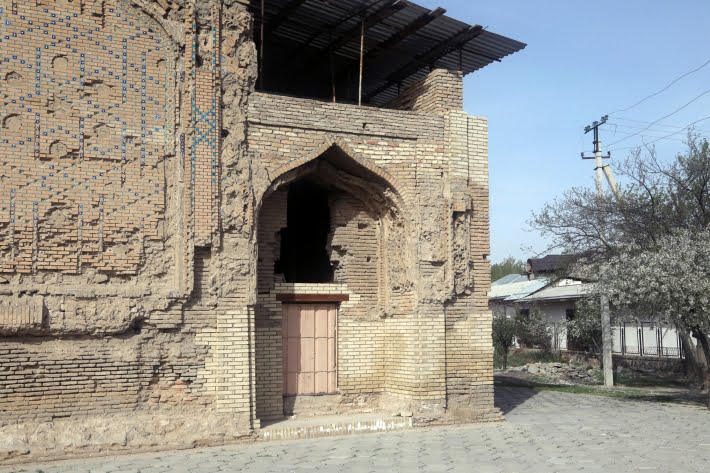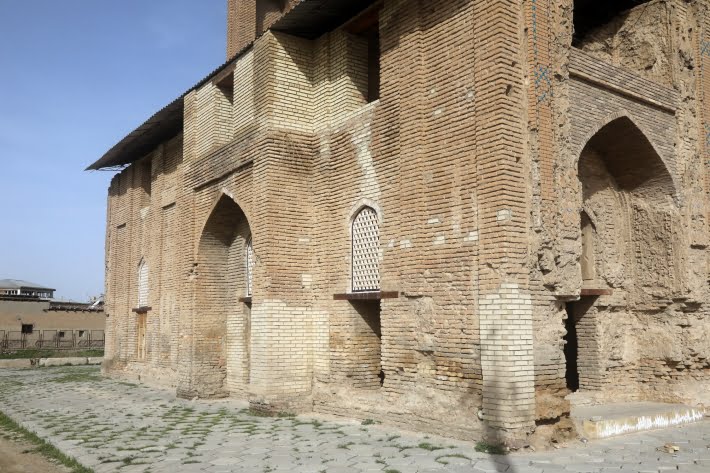Samarkand - Ishrat Khana Mausoleum
The Ishrat Khana mausoleum in Samarkand dates back to the reign of the Temurid Abu Said (1451 – 1469), the ruins of which bear a somewhat unexpected name: “Ishrat Khana” – “House of Joy”, obviously because of a very rich architectural design.
There are legends that connect this building with Temur, but in 1896 the archaeologist Vyatkin found a document that says that a noble woman Habiba-Sultan, wife of Temurid Sultan Ahmed Mirza, built a domed building over the grave of her sister-in-law, Princess Hawend Sultan biki, daughter of the then ruler Abu Said.

This building, which dates back to 1464, was a dynastic mausoleum for a wife and children from the Temurid house. According to written records from 1464, the building was commissioned by the wife of Sultan Abu Said Habiba Sultan Begim in memory of her deceased daughter, Sultan Hawend biki.
During archaeological excavations in 1940, up to thirty women and children were found buried here. The building described represented a whole complex of buildings.
The central square was occupied by the burial vault, which was decorated with a high portal from the west. From the south, the building was adjoined by the arched dome gallery, which provided an additional entrance to the tomb.

On the north side there was a mosque. In the corners of the building there were vaulted rooms for people who served the mausoleum. Only the ruins of this building have been preserved.
In 1903 the dome collapsed together with the high drum in an earthquake. In the 1940s restoration works were carried out to preserve the monument. The central square was occupied by the tomb, which was decorated with a high portal from the west.
From the south, the arched domed gallery adjoined the building, through which an additional entrance to the tomb was created. On the north side there was a mosque. In the corners of the building there were vaulted rooms for people who served the mausoleum.
The Ishrat Khana Mausoleum is located north of the Abdi-Darun mazar in Samarkand. It is a building from the second half of the XVth century with a large portal and a high central hall, above which the dome was still preserved in the XXth century. Under the hall there is a burial chamber with 23 burials of women and children.

Inside the mausoleum mazaik panels, wall paintings and plaques were used. The meaning of Ishrat-khana “house of joy” is to convey the idea of the “eternal home for paradisiacal life”.
